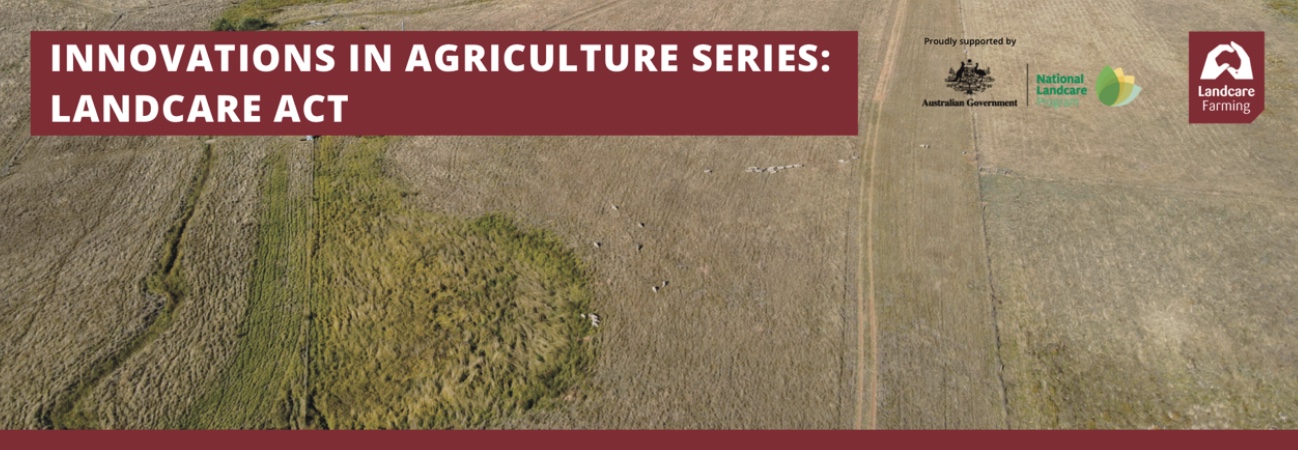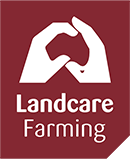
Protecting threatened ecological communities while running a viable grazing business
Matthew Ipkendanz and his family are demonstrating how to maintain and improve threatened ecological communities in the ACT while also running a viable grazing business.
The Ipkendanz family has farmed ‘Callum Brae’, since the 1950s. Formerly part of the Duntroon Estate and the post World War One Soldier Settlement Scheme, the heritage listed property is home to some of the most threatened ecosystems in Australia. Recognising the importance of these ecosystems, large parts of the property were resumed by the ACT Government to create the Callum Brae Woodland Reserve and Jerrabomberra Grassland Reserve in 2007.
The current 150-hectare Callum Brae farming property is considered the finest working example of a soldier settlement lease in the ACT. It is considered especially significant because it characterises the principles and hardships endured by servicemen after the First World War, and the heritage citation not only conserves the buildings but also the rural landscape in which it is located.
The family grazes 350 fine-wool Merino sheep, with their wool being purchased by local brokers and exported to create high end-fashion garments in Italy. Wool produced on the property is of fine wool export quality, partially due to the quality of the native grasslands and cool climate which creates finer, larger fleeces.
To ensure on-farm sustainability and further improve the quality of their wool, the Ipkendanz’s have adopted a range of practices including targeted removal of noxious weeds and rotational grazing to encourage the growth and diversification of native grasses and forbs. They have found that these changes not only reduce vegetable matter in the wool but also improve biodiversity, animal health and agricultural output.
“We can manage the environment to a high standard, but also produce the food and fibre we need as a growing society,” said farm manager Matthew Ipkendanz. “They’re not mutually exclusive, they’re mutually beneficial, and farmers are ready, able and willing to do the work.”
Matthew has divided the property into smaller paddocks and moves his sheep through them on a continuous basis to ensure there is always sufficient ground cover to protect the root systems while still encouraging diversification. Currently it takes between three to four weeks to complete a circuit, with sheep typically spending two to three days in each paddock.
“You don’t want a consistent density of grass. You want different types of native grasses and different heights and thicknesses to create different habitats,” said Matthew. “Our target grass height is between 10 to 15 cm or 1 to 2 tonnes per hectare. This provides a mosaic of different habitats for endangered species found on the property including the Striped Legless Lizard and the Grassland Earless Dragon which is now listed as one of 20 species that could be extinct by 2040.”
The Ipkendanz family are passionate about protecting the natural temperate grassland on the property as it is considered to be one of the most threatened ecosystems in Australia with less than 5 per cent estimated to remain in moderate to good condition in the ACT. Through the family’s sustainable management, the native grasses and forbs on the property have continually improved, and are now considered some of the most significant in the ACT.
The property is also home a significant patch of box gum woodland (including Yellow-Box and Blakely’s Red Gum), another threatened ecological community that the family have been working to conserve and improve. They have focused on protecting native regrowth to ensure the understory contains a mix of small and medium trees that will eventually replace the large trees at the end of their natural life.
To achieve this, Matthew has developed innovative tree guards that can be reused across the property with the support of Landcare ACT and Greening Australia. This has allowed paddocks to be grazed while still providing additional habitat for threatened species including the Superb Parrot, Scarlet Robin and Diamond Firetail.
“Our work has resulted in greater connectivity between box gum woodland on the property and the Callum Brae Woodland Reserve,” said Matthew. “This is important as it’s estimated that around 66 percent of Yellow-Box and Blakely’s Red Gum in the ACT has been lost since the 1750s. Around 44 percent of what’s remaining is located on rural properties including here on Callum Brae.”
The Ipkendanz family are also making water quality improvements to the property including through the construction of leaky weirs and planting native grasses and trees in and along the riverbanks.
Leaky weirs have been constructed to improve soil infiltration and reduce erosion, which is especially important as water running through the property flows through to Jerrabomberra Creek and Lake Burley Griffin. To quantify the impacts of his work, pH water sampling has been undertaken on the property with the results showing a reduction is water acidity.
The family are pleased with the works undertaken so far on the property, and hope that they can continue to sustainably manage the property as a productive agricultural business.
“For myself personally it’s all about contributing to a greater good,” said Matthew. “As a third-generation farmer who has lived on this property my whole life, I see myself as a custodian who not only wants to manage the land but ensure it is retained for future generations.”
This case study was produced as part of the Landcare Farming Innovations in Agriculture Series. Supported by the Australian Government’s National Landcare Program, the Landcare Farming Innovations in Agriculture Series is managed in partnership by Landcare Australia and the National Landcare Network.



